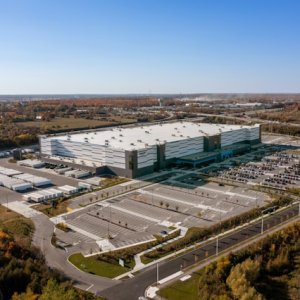
E-Commerce Offers a New Channel of Opportunity
The increasing availability of new technologies and connectivity services is changing the way goods are purchased, forcing companies to adapt their real estate and warehousing facilities to the e-commerce boom. For the industrial sector, this is an opportunity. “Companies are preparing for this change. They are improving their processes to increase their participation in the e-commerce market,” says Luis Gutiérrez, President Latin America of Prologis. “This boosts demand for logistics real estate as companies change their supply chain strategies.”
With companies like Amazon offering their Prime services with rapid delivery times, warehouses need to be close enough to residential centers but also far enough so the costs of facilities are not too high. “Companies like Amazon are under increasing pressure to deliver in short time frames so they have begun establishing small to medium sized distribution centers within cities so they can meet e-commerce needs faster,” says Victor Lachica, Director General of Cushman & Wakefield. These distribution centers allow companies to store a small level of stock for a short period of time, significantly decreasing lead times.
As e-commerce gains momentum in Mexico, demand for industrial parks is rising, leading industrial real estate companies to adopt new business strategies. Terrafina, the biggest industrial Fibra in Mexico, expects e-commerce to be a game changer. “As for the logistics sector, e-commerce has been very beneficial for the sector and we expect great opportunities to keep arising from it,” says Alberto Chretin, President and Director General of Terrafina.
A NEW DEAL
After 14 months of talks, North America has a new trade deal: the US-Mexico-Canada Agreement (USMCA) that replaces NAFTA. The lengthy renegotiations had some questioning their further investment in Mexico. Forecasts predicted a hard hit for industrial parks given the sector’s close relationship with the automotive industry, which looked to take the brunt of the trade pressure.
The reaching of a preliminary agreement helped to calm the waters. “Since the elections in July and the announcement of the USMCA trade agreement, the resulting certainty is stabilizing the Mexican economy,” says Gerald “Rick” Ricker, Director General of Reichmann International. Also upbeat about the future, Terrafina’s Chretin says the commercial renegotiations mostly affected those companies that were in the early stages of venturing into the Mexican market. “But those companies already present in the country were already too immersed in their existing supplier and client network,” he says.
Although there remains a modicum of uncertainty given the new deal is still awaiting ratification, David O’Donnell, Director General of O’Donnell, says there will be little long-term disruption in Mexico. “If USMCA is not ratified, tariffs will conform to WTO rules, which will translate into an average weighted tariff of approximately 3 percent for Mexican exports to the US. In the medium and long-term, this will not disrupt existing supply chains or limit Mexico’s competitiveness. In the short run, it will create volatility,” he says, adding that “USMCA is not about each member’s competitive advantage but the USMCA countries’ competitivity vis a vis other trading nations and blocks.”
Regardless of political changes and trade agreements, it is clear that Mexico remains a privileged country in terms of geographic location and population. These factors should keep investors interested in the country and its industrial segment, according to O'Donnell. “Mexico continues to benefit from its work force and a reliable and competitive supplier base. Furthermore, the energy sector represents a great opportunity for the manufacturing sector to create a block that imports and exports to the world,” he concludes.
















